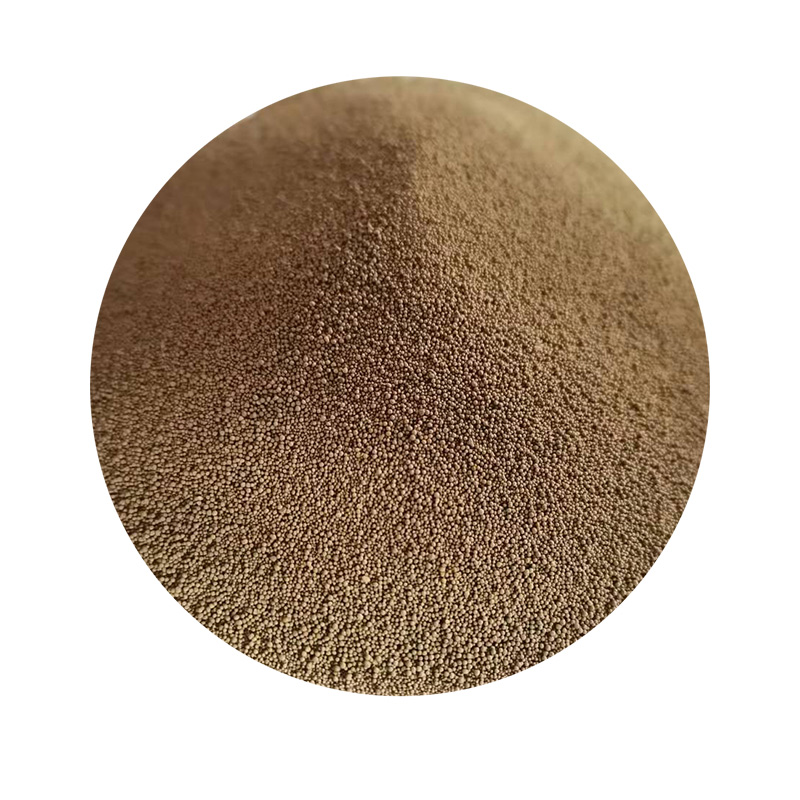Understanding the Type of Sand Used in Sand Casting
Sand casting is one of the oldest and most versatile methods of metal casting, used in manufacturing a variety of components across different industries. At the core of this process lies the sand itself, which serves not just as a mold material but also plays a crucial role in determining the quality of the final product. This article will explore the various types of sand commonly used in sand casting and the specific properties that make them suitable for this process.
1. Silica Sand The Most Common Type
The most widely used sand for sand casting is silica sand, primarily composed of silicon dioxide. Silica sand is favored due to its high melting point (around 1710 degrees Celsius) and its excellent thermal properties, which allow it to withstand the heat involved in the casting process without breaking down or deforming. The grain size and shape of silica sand can vary, impacting the mold's permeability and strength. Typically, a fine to medium grain size is preferred to achieve a smooth surface finish on the cast part.
In addition to its thermal properties, silica sand is also relatively inexpensive and available in large quantities. Nevertheless, it does have a few drawbacks, notably its health risks when inhaled as silica dust, which can lead to silicosis. To mitigate this risk, precautions must be taken when handling silica sand in foundries.
2. Green Sand A Mixture of Sands and Binders
Green sand, a term that refers to a specific mixture used in sand casting, is another popular choice. Green sand is composed of silica sand, clay (which acts as a binder), and water. The presence of clay gives the sand its unique ability to retain shape and strength while ensuring that the mold has enough moisture to prevent cracking during the pouring of molten metal.
The name green refers to the moisture content, not the color, as the sand is typically gray or brown. Green sand molds are known for their excellent collapsibility, which means they can easily break apart once the metal has cooled, allowing for easy mold removal. This type of sand is particularly favored in iron and aluminum casting industries due to its effectiveness in producing intricate shapes and thin-walled castings.
what type of sand is used for sand casting

3. Synthetic Sand Enhancing Performance and Reducing Environmental Impact
In recent years, the development of synthetic sands has gained popularity in the casting industry. Synthetic sands are manufactured from materials such as phenolic resins or other polymer-based binders, providing controlled properties that can outperform traditional sand types. They can be designed to offer improved strength, moisture retention, and reusability, making them environmentally friendly by reducing waste.
One significant advantage of synthetic sand is its ability to create molds with enhanced accuracy and repeatability. Furthermore, they generate less dust during handling, which reduces health risks for workers. Despite their higher cost compared to natural sands, the benefits in performance and safety often make synthetic sands an attractive option for modern casting operations.
4. Other Specialized Sands
While silica and green sand are the cornerstones of sand casting, there are other specialized sands used for specific applications. For instance, zircon sand is utilized for high-precision casting due to its excellent thermal stability and low thermal expansion properties. Chromite sand, likewise, offers superior thermal resistance, making it ideal for casting ferrous and non-ferrous metals.
Furthermore, olivine sand, sourced from natural silicate minerals, is another alternative with high thermal stability and good refractoriness. Its capability to withstand high temperatures makes it a suitable choice in applications where other sands may fail.
Conclusion
In conclusion, the type of sand used in sand casting significantly influences the quality and efficiency of the casting process. While silica sand remains the standard due to its availability and cost-effectiveness, alternatives like green sand and synthetic sands offer enhanced performance in various applications. Understanding the properties and benefits of different sands helps manufacturers choose the right material for their specific casting needs, leading to better product outcomes, reduced waste, and improved worker safety in the foundry environment. As the industry evolves, continuous innovations in sand formulations promise even greater advancements in casting technologies.
Post time:ডিসে. . 05, 2024 12:05
Next:Innovative Techniques for 3D Printing with Sand in Modern Applications
